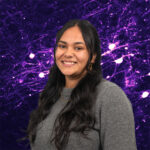Areas of expertise
- 3D/Confocal Microscopy
- Laser microdissection
- In vivo multiphoton and Ca2+ imaging
- Multi omics
- Neurodegenerative diseases
Dr Anna Harutyunyan joined the Centre for Dynamic Imaging in 2024 after completing her PhD in Computational Neuroscience. Prior to her PhD, Anna was classically trained in the Liberal Arts, graduating as Phi Beta Kappa with BSc degrees in Inorganic Chemistry and Molecular Biology. She completed her honours internship at Hershey Medical Center (Penn State University College of Medicine) before joining Carlos Lois’s group at California Institute of Technology (Caltech). There, she employed live Ca2+ imaging and optogenetics in mouse and zebra finch models to study neuronal circuits involved in learning and memory. This work laid the foundation for her deep interest in advanced imaging techniques and neurobiological research.
In 2019, Anna moved to Australia to pursue her PhD at the University of Melbourne. Her doctoral research employed high throughput multi-omics, 3D imaging, and in vivo electrophysiology to investigate the pathological mechanisms underlying Alzheimer’s disease and acquired epilepsy.
At the Centre for Dynamic Imaging, Anna is part of the spatial omics team supporting the MERSCOPE and Multiplex Ion Beam Imaging (MIBIscope) platforms. She also provides support and expertise for experimental design and sample preparation for confocal and in vivo imaging and laser capture microdissection.










